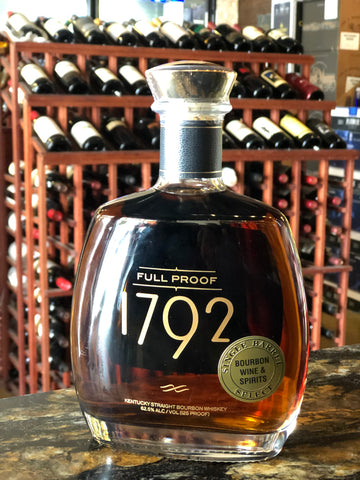Bourbon is more than just a spirit; it’s a cultural phenomenon that has witnessed a remarkable surge in popularity over the years. Among the extensive pantheon of bourbon offerings, the 1792 brand has emerged as a distinguished contender, boasting several notable expressions. Two of its prominent offerings, the 1792 Single Barrel and the 1792 Full Proof, invite spirited debate among enthusiasts and casual drinkers alike: Which of the two reigns supreme? This discourse isn’t merely about palate preferences—it’s a reflection of deeper appreciation for not just the flavors, but the craftsmanship, history, and philosophy behind these bottles.
To embark on this bourbon battleground, one must first understand the origins and character of 1792. Named after the year Kentucky became a state, the distillery pays homage to its heritage with every sip. Established in Bardstown, 1792 Distillery is known for its meticulous attention to detail and commitment to producing high-quality bourbons. The Single Barrel and Full Proof varieties stand out distinctly, each with its unique qualities that cater to different preferences and contexts.
The 1792 Single Barrel is often lauded for its exceptional flavor profile. As the name suggests, each bottle comes from a single cask, which means flavors can vary significantly from barrel to barrel, embodying the essence of the individual aging process. The result is a nuanced bourbon that offers a kaleidoscope of tasting notes. Typically, drinkers can expect a medley of caramel, vanilla, and baking spice, all accentuated by a robust oak backbone and a slightly dry finish. This complexity is not merely an accident of fate; it is a deliberate outcome of the aging process and the unique environment within each barrel. Every sip encapsulates the distinct character of its cask, enticing bourbon aficionados in pursuit of the elusive “perfect pour.”
On the other hand, the 1792 Full Proof bourbon commands attention with its unabashed intensity. Bottled at a higher proof—typically around 125 proof—this expression offers a bold and assertive experience. The Full Proof variety prides itself on delivering the rich core notes of the bourbon while enhancing them with additional layers of flavor that emerge due to the elevated alcohol content. Many find the tasting notes for the Full Proof to exhibit deeper caramel undertones, rich chocolate, and spiced fruit, all elegantly intertwined. The higher proof provides an increased viscous mouthfeel, allowing for a longer lingering finish that envelops the palate in an inviting warmth.
Yet, beyond the immediate sensory delights of these two bourbons, there exists a subtler conversation regarding the very nature of bourbon appreciation. The Single Barrel expression invites exploration; enthusiasts often compare different vintage bottles and share tales of unexpected finds. It harnesses the spirit of adventure, appealing to those who crave variety and the thrill of unpredictability. Conversely, the Full Proof renders a more consistent experience, valued for its power and boldness. This distinction leads to varied drinking occasions: while the Single Barrel might be savored contemplatively, the Full Proof is often enjoyed in social spaces, igniting camaraderie among friends who share their tasting adventures.
Bourbon enthusiasts often find themselves enchanted by the cultural implications of their choices. The preference for either 1792 bottling can subtly reflect one’s personality—do you lean towards the ornate and unpredictable, or do you favor the robust and straightforward? This observation draws a fascinating parallel to the broader appeal of bourbon itself as both a social lubricant and a solitary indulgence. A dram in hand can inspire lively conversations at gatherings or provide solace during personal reflection. The bourbon experience serves to weave connections among individuals, bringing them together through shared stories rooted in savoring and discovery.
Moreover, the craftsmanship behind both bottlings bears witness to the commitment of the distillers. Each barrel tells a story, crafted through precise grain selections, meticulous fermentation, and intensive distillation processes. The distinction between aging conditions—be it temperature fluctuations or humidity levels in the warehouse—adds layers of character that cannot be overlooked. The uniqueness of the 1792 distillery method illustrates a commitment to excellence that is appreciated by both connoisseurs and novices alike.
In discussing the battle of 1792 Single Barrel versus Full Proof, it becomes clear that proclaiming a definitive “winner” is a daunting task. Both expressions offer rich, deep experiences with remarkable craftsmanship. Ultimately, the question of which reigns supreme may not have a singular answer. Instead, it prompts a more profound exploration of the qualities that individuals value in their bourbon journey. Each sip serves not only to tantalize the palate but also to engage with the very essence of American heritage and the art of distillation. Thus, both the 1792 Single Barrel and Full Proof stand as testament to the ever-evolving landscape of bourbon—each worthy of respect and admiration in their unique right.
In conclusion, whether you gravitate towards the elegant unpredictability of the Single Barrel or the audacious depth of the Full Proof, your choice is a reflection of your own tastes and the journey you wish to embark upon with each pour. The bourbon battle is not just about preferences; it’s about the stories we share and the connections we foster through this exceptional spirit. So, the next time you find yourself indulging in the rich flavors of 1792, take a moment to appreciate not only the drink in your glass but the profound legacy it represents.
